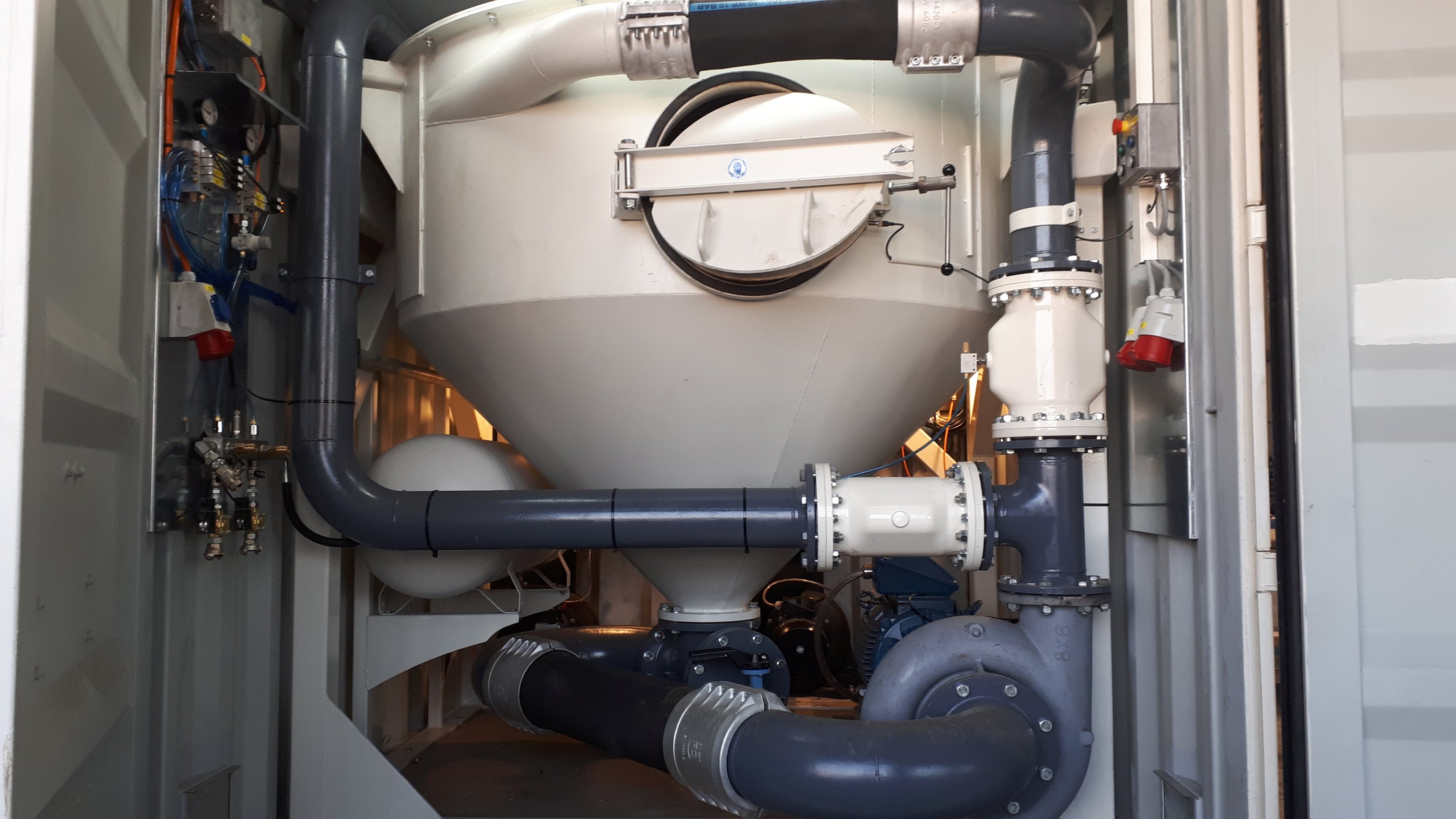Man is a confusing mixture of opposites and contradictions. Couchpotato and crossfitter, Stone Age man and quantum physicist, macho and feminist are often united in one person, the alcoholic says no to drugs in pill form, the animal lover likes a good Sunday roast. Furthermore, the homo sapiens is workaholic and sloth at the same time. Many (or even most) inventions can be traced back to someone putting a lot of hard work into the development of a machine in order to do less work. It started with the invention of the wheel, but it didn’t stop there. The machines that help us manage our day-to-day work have become a little more complex since then, and the chain of innovation is far from over.
The connection between man and machine is the so called mechatronic. Its task is to automate operations and processes to –who would have guessed- relieve people. That’s the focus of Martin Schmidt and Walter Trojer of the Züblin Spezialtiefbau GmbH.
The tasks of mechatronics at Züblin are vast. It starts with maintenance and reparation of devices which are usually not standardised, but rather tailored to customers‘ needs, to the production and construction of recording devices at grouting systems and drills, design and construction of entire plants of the mixing, grouting and drilling tech, all the way to fully automated control and monitoring of water management, everything is included. “That includes the support at the construction sites of the plant construction, the enrollment of the staff and the support during operations”, explains Walter Trojer. A research project every now and then completes the range.
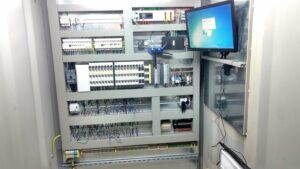
Drill-Pilot®: purposeful drilling
In their opinion, the biggest innovation so far was the development of the Drill-Pilot® (together with Northrop Grumman Litef, a German sensor manufacturer); a measuring device that determines the precise alignment of the drilling direction and thus, enables exact drilling. “It opened us many possibilities in the sector of controlled drilling”, says Martin Schmidt. The drill-pilot has made it possible for us to do measurements ourselves and has improved the understanding to interpret measuring results.
“All projects that we have realised up to now have been extremely exciting”, remembers Walter Trojer, “whether it was the laser measurement in Canada, the construction of compact grouting units for the tunnel construction in Chile, or the construction of a high-performance mixing unit. Every project itself is exciting”.
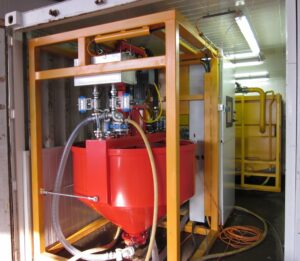
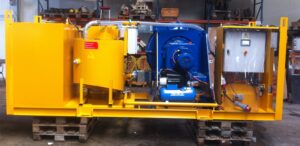
From strip chart recorder to human-machine interface
Mechatronic is strongly linked with digitisation in the field of grouting technology. “The question is, when are we talking about digitisation?”, asks Walter Trojer. „I would say that it is the transition from strip chart recorder [note: writing measuring devices that record the time course of a measured variable on paper webs in the form of a line diagram] to the first devices that actually record data in digital form on the first types of storage media (5.25 „floppy disks, later CF cards).“ The first devices of this kind were actually not more than digital strip chart recorders, the human-machine interface (HMI) came later, “with the first HMI terminals that enabled a basic representation of the processes and also control of the grouting.”
Some time later, the switch to the PC followed, which was able to integrate additional features on top of an attractive and clear user interface, like the GIN criteria for injections (note: the Grouting Intensity Number denotes the limit value of grouting volume and pressure, which must not be exceeded) or working with default lists. To date, the computer and its environment are the best traded and most widely used platform. The most important difference between the grouting technology from then and now is “clearly the possibility of remote maintenance, which helps to save a lot of time and money”, knows Martin Schmidt.
What the future holds: an outlook
„Everything that can be invented has been invented!“ Charles Duell, chief representative of the United States Patent Office, already held this opinion at the end of the nineteenth century and subsequently wanted to close the patent office. (A few decades later, Albert Einstein, one of the brightest minds in the world, supposedly said the following sentence: „There is not the slightest sign that we can ever develop atomic energy.“).
We are smarter and know that we know nothing. The future is uncertain – but it is clear that innovations and innovations will continue to exist.
„The trend in the construction industry is clearly towards digitalization – keyword Industry 4.0“, says Martin Schmidt. This does not only include the reduction of logs in paper form, but rather a complete recording of all data and the transfer of all possible production parameters into a corresponding BIM application. “Data storage in the cloud is already a big topic to have all data available at all time.” Real-time monitoring of hardware and software is becoming an increasingly important topic. Automatically monitoring operating parameters such as service intervals, fluid levels, consumption figures and the like will surely be standard soon, according to Schmidt. In the future there will have to be a standardisation for BIM and data exchange with machines. “Up to now it has been the responsibility of the user to ensure that the machine data somehow get into the BIM software and vice versa. The challenge on the construction sites will be to ensure an internet connection anywhere and at any time – which can be a problem a few hundred meters underground or on the 5th basement of a high-rise building.”
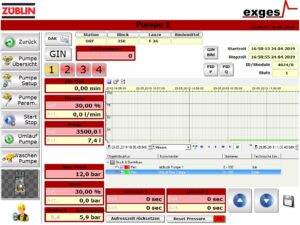
A negative trend that Trojer observes is that “equipment of the devices is picked with a larger number of sensors, which already cover a large part of the production parameters but can only be used with the manufacturer´s own operating parts or software and can hardly be serviced by the customer.” Devices are becoming more and more complicated, repairs are becoming less and less possible. “Additionally, especially in recent years, we experienced that manufacturers spend less and less time in the design and testing of devices, which means that problems often arise in actual operation that relate to the incorrect design of components or even the lack of important parts.”
At Züblin, future projects depend on what the construction sites need. “If I could choose – a self-drilling drill would be interesting, as well as a solution for a self-positioning drill”, so Schmidt. The innovation-driven hobbyists of the mechatronics department will certainly not be bored in the future. “Especially in special engineering, almost every solution is a prototype that is only used for a few construction sites and has to be revised and adapted for new projects. So, there is always something new to do and there is never boredom or routine.”
*****
Guest authors:
Walter Trojer started his career 35 years ago as a tunnel electrician as part of a team that dealt with control technology and data recording – at that time recordings were made with Commodore 64 computers, logs were printed on continuous paper. Over the years, he has personally experienced all the innovations that have been introduced in foundation engineering and has gained experience with drilling, grouting and everything that goes with it. The mechatronics department has developed from the electronics department, which he took over in early 2000. On the construction site, he is the link between the customer, construction site management and mechatronics.
Martin Schmidt has always been interested in electronics, computers and machines. The tasks of the trained civil engineer at Züblin are primarily of an administrative nature (offers, billing, cost accounting, forecasts, as well as the maintenance of water management and development projects), but when need arises, he turns his hobbies into profession and helps out with equipment construction, repair and construction site support – the Swiss Army Knife from Züblin, one could say.
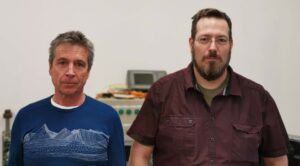
Photocredit: Züblin
